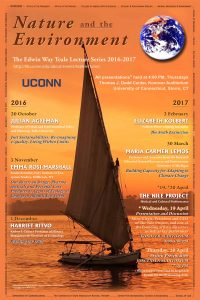We are pleased to have a former student, Catherine Pomposi, return to campus to talk about her current research in a seminar this week. Catherine is currently an NSF Graduate Fellow at Columbia University. Here are the details:
Date: Friday, Oct 10 @ 11:30 am
Location: AUST 420 (Geography Conference Room)
Title: Understanding Sahelian Precipitation Variability on Key Timescales with a Moisture Budget Framework and Applications to Society
Abstract:
Abstract: In this talk, I will largely focus on decadal scale precipitation variability over the West African Sahel in the CAM4 Model, using a moisture budget framework. Overall results include the ability of the model to pick up important relationships between Sahel precipitation variability on decadal timescales with the Indian and Atlantic basins, and shows that the change in precipitation minus evaporation in the region is dominated by column integrated moisture convergence due to the mean flow, with the convergence of mass in the atmospheric column mainly responsible. Diagnosis of moisture budget and circulation components within the main rainbelt and along the monsoon margins show that changes to the mass convergence are related to the magnitude of precipitation that falls in the region, while the advection of dry air is associated with the maximum latitudinal extent of precipitation. I will then briefly introduce the next step of this work, which is to continue studying the moisture budget prior to the monsoon onset, which provides insight into the interannual and seasonal variability of the system. Finally, I provide information about a recent trip to Senegal which allows for highlighting the kinds of climate services workshops that are in place in the Sahel, and bridges the scientific aspects of monsoon study with societal needs and a human component.


